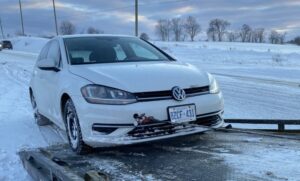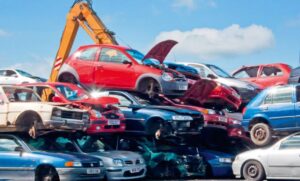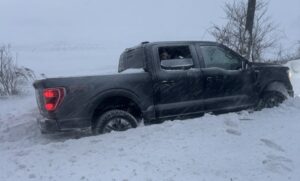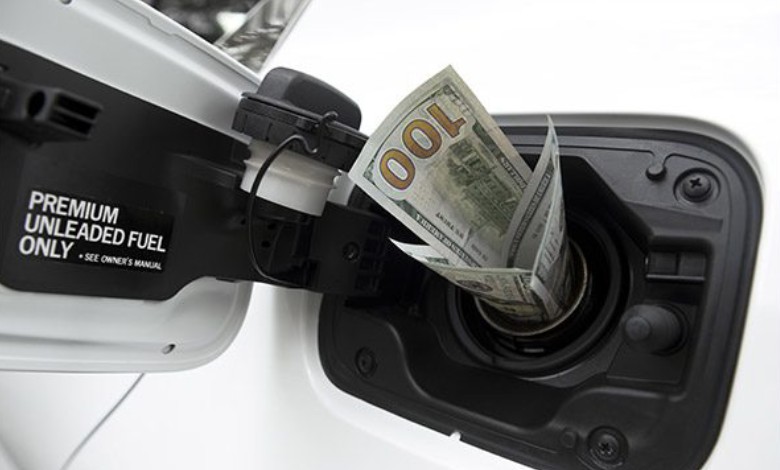The price of gasoline in Ontario and across Canada is a constant worry for commuters, families, and businesses alike. Every fluctuation at the pump directly impacts household budgets and operational costs. For drivers in the Aurora and Greater Toronto Area (GTA), maximizing every litre of fuel is not just about saving money; it’s about reducing wear and tear on your vehicle and minimizing the chances of a breakdown on a busy highway. A well-maintained and efficiently driven vehicle is not only cheaper to operate but also far less likely to require the services of a tow truck.
At Pars Towing, we’re committed to the safety and longevity of your vehicle. While we are always ready to provide fast, professional towing and roadside assistance across Aurora and Southern Ontario—including jump starts, tire changes, and fuel delivery—we believe the best service is helping you avoid trouble in the first place. By adopting smart driving habits and a routine maintenance schedule, you can significantly reduce your fuel consumption, resulting in substantial savings over the course of a year.
- Learn More >>>>>Emergency Towing Services : When and How to Call for Help
Part I: Driving Habits That Directly Reduce Fuel Consumption
The single biggest factor in your vehicle’s fuel economy is your driving style. Aggressive acceleration and braking can waste between 15% and 40% of your fuel, turning your hard-earned money into unnecessary exhaust. By practicing ‘eco-driving,’ you can immediately see a difference.
1. Drive Smoothly and Avoid Aggressive Acceleration
The most effective way to save money on gas is to alter your driving behaviour. Rapid acceleration requires a significant surge of fuel to meet the sudden demand for power. Think of your gas pedal as having an egg under it—you want to press it gently. Studies show that aggressive driving, characterized by rapid acceleration and hard braking, can lower your gas mileage by roughly 15% to 30% at highway speeds and 10% to 40% in stop-and-go city traffic.
To correct this:
- Accelerate Gradually: Aim for a steady, smooth takeoff. It takes less energy to maintain speed than it does to create it quickly.
- Anticipate Traffic: Look far ahead to foresee when you will need to slow down. This allows you to coast to a stop rather than slamming on the brakes. Coasting uses little to no fuel, while braking converts all that forward momentum and fuel energy into useless heat and brake dust.
2. Observe the Speed Limit (Especially on Highways)
Every vehicle has an optimal speed for fuel efficiency, which is typically between 50 and 80 kilometres per hour (approx. 30 to 50 mph). Once you exceed this range, aerodynamic drag—the resistance of air pushing against your vehicle—increases exponentially. On Ontario highways, where speed limits often sit at 100 km/h, driving even 10 km/h slower can yield significant savings.
For example, decreasing your highway speed from 120 km/h to 100 km/h can save you 7% to 14% on fuel. Maintaining a lower, steady speed ensures your engine operates at its most efficient revolutions per minute (RPM).
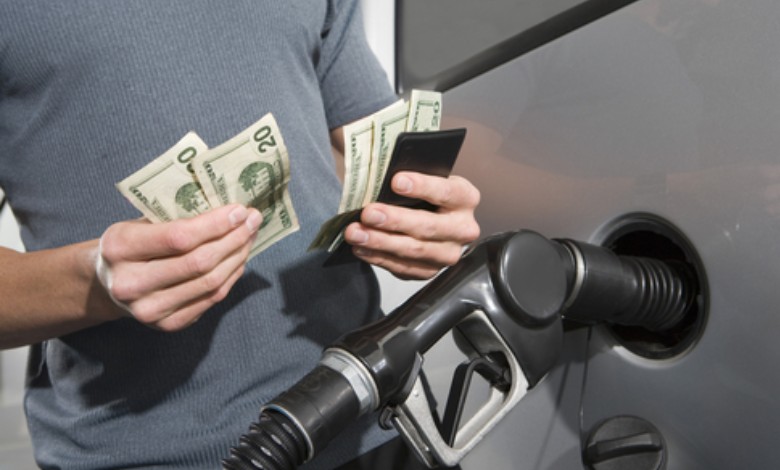
- Learn More >>>>Can Towing Ruin the Transmission?
3. Utilize Cruise Control on Flat, Open Roads
Cruise control is your friend on the long, flat stretches of highway across Southern Ontario. By electronically maintaining a constant speed, the system eliminates the subtle, continuous, and highly inefficient micro-accelerations and decelerations that a human driver’s foot inevitably makes. A study by Natural Resources Canada found that vehicles fluctuating in speed use up to 20% more fuel than those held at a steady rate.
The Caveat for Aurora Drivers: Cruise control is not an ‘always-on’ tool. It is most effective on flat or gently rolling terrain. On very hilly or mountainous terrain, a conventional cruise control system may over-accelerate up a hill or downshift unnecessarily, consuming more fuel than a driver who carefully manages momentum. In these situations, disengage it and use gravity to your advantage, accelerating slightly down a slope to carry momentum up the next.
4. Minimize Idling Time
Idling gets you zero kilometres per litre. When your car is parked and running, it is still consuming fuel. Modern vehicles with fuel injection systems do not require the extended warm-up times that older vehicles once did. Leaving your engine running for long periods is a guaranteed way to waste gas.
- The 60-Second Rule: If you anticipate being stopped for more than 60 seconds (other than in traffic), turn off your engine. This is particularly important for drivers waiting in school pick-up lines or at long railway crossings in areas like Aurora.
- Winter Myth: It’s a common Canadian myth that you need to let your car idle for ten minutes in the winter. In fact, most manufacturers recommend driving off gently after about 30 seconds. The engine will warm up more quickly and efficiently when driven, not when idling.
Part II: Maintenance & Mechanical Tips for Maximum Efficiency
Your car’s condition directly influences how much fuel it consumes. Neglected maintenance forces the engine to work harder than necessary, making it an expensive habit. Regular maintenance is not just a safety issue—it’s a critical fuel-saving measure.
5. Maintain Correct Tire Pressure
This is one of the easiest and most overlooked fuel-saving tips. Underinflated tires increase ‘rolling resistance’—the force required to move the tire across the road surface. Increased resistance means the engine has to burn more fuel to maintain the same speed.
- The Impact: Driving with underinflated tires can reduce your fuel economy by 0.2% for every 1 psi drop in pressure in all four tires.
- Actionable Step: Check your tire pressure at least once a month. Use the pressure recommendation found on the sticker inside the driver’s side door jamb, not the maximum pressure listed on the tire itself. Remember that cold weather causes air to contract, meaning your tires will lose pressure during the cold Ontario winter months, requiring more frequent checks.
6. Keep Your Engine Tuned and Check the Air Filter
A well-maintained engine is an efficient engine. Routine tune-ups, including replacing spark plugs, can ensure your engine is firing properly. A malfunctioning oxygen sensor, a dirty fuel injector, or a worn spark plug can all cause your engine to run inefficiently, wasting fuel.
More simply, check your air filter. A clogged or dirty air filter restricts the flow of air into the engine’s combustion chamber, disrupting the crucial air-to-fuel ratio. Replacing a severely clogged air filter can improve a car’s gas mileage by up to 10%.
- Learn More >>>>Aurora Towing: Our Average Wait Time Promise
7. Use the Recommended Oil Grade
Always use the motor oil grade recommended in your vehicle’s owner’s manual. For many newer vehicles, manufacturers specify a “lighter” or lower-viscosity oil, which reduces engine friction. Less friction means less work for the engine, which translates to better fuel economy. Using a higher-viscosity oil than recommended can slightly increase friction and decrease mileage.
8. Choose the Correct Gasoline Octane Rating
Stop wasting money on premium gas if your car doesn’t need it. Gasoline grades (Regular 87, Mid-Grade 89, Premium 91/93 in Canada) are defined by their octane rating, which measures the fuel’s resistance to premature ignition, or ‘engine knock.’ Octane does not relate to energy content or cleaning power.
- Check Your Manual: If your owner’s manual states “Regular Fuel Required” or has no specific requirement, using premium gas is purely a waste of money, offering zero benefit to performance or efficiency. You could be wasting between $200 to $400 annually.
- When to Use Premium: Only use premium if your manual explicitly states “Premium Fuel Required,” as is common for high-performance or turbocharged engines.
9. Lighten the Load—Remove Unnecessary Weight
The heavier your vehicle, the more energy it takes to move it. Every extra 100 pounds of weight in your vehicle can reduce your miles-per-gallon (or L/100km) by about 1%.
- Practical Application: Don’t use your car as a mobile storage unit. Empty your trunk of non-essential heavy items like golf clubs, heavy tools, or boxes of items you’ve forgotten about. While the savings from removing a single backpack are negligible, eliminating 200 to 300 pounds of unnecessary ballast can make a noticeable difference in your fuel consumption over time, especially during city driving around Aurora.
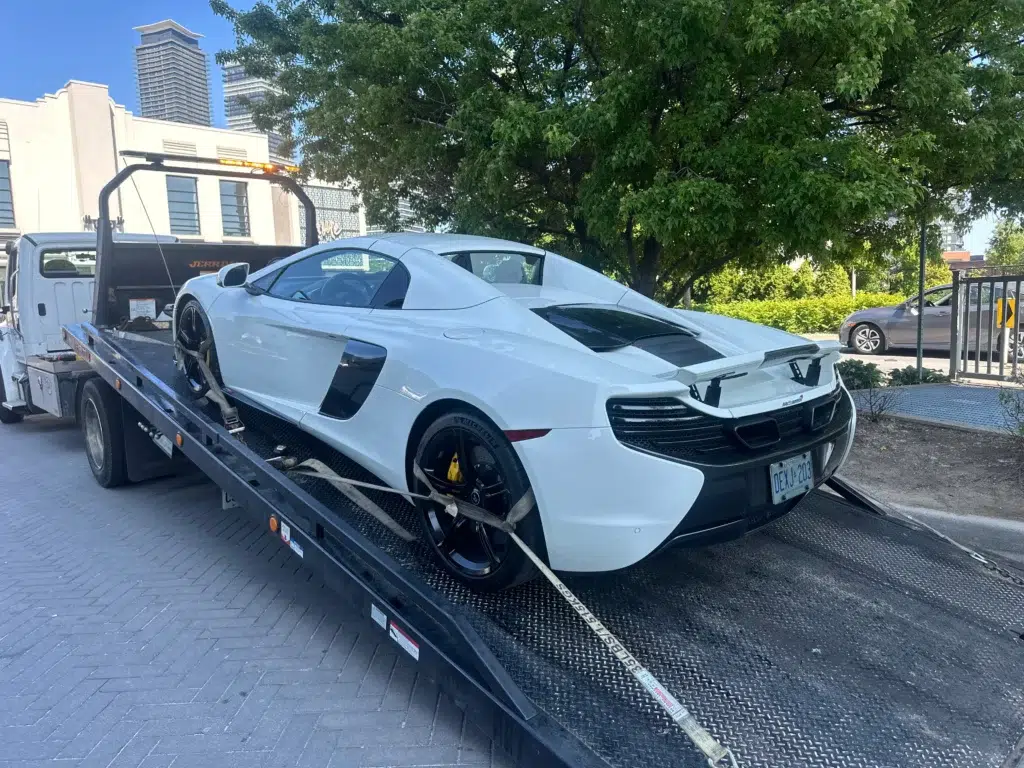
Part III: Strategic Planning and Environmental Control
Your route, how you load your vehicle, and even how you use its internal features contribute to the overall fuel economy. Smart planning is key to maximizing every dollar you spend on fuel.
10. Improve Aerodynamics and Remove Roof Racks
Anything that increases your vehicle’s profile and disrupts the smooth flow of air over it will increase aerodynamic drag, forcing the engine to work harder. The most common culprit is a roof rack or cargo box.
- The Impact: Hauling a large, blunt roof-top cargo box can reduce fuel economy by 6% to 17% on the highway.
- Actionable Step: If you are not actively using a roof-mounted cargo box, ski rack, or bike rack, remove it. The marginal inconvenience of re-installing it is far outweighed by the consistent fuel savings you’ll gain from reducing air resistance. This is especially true on Ontario’s major highways like the 400 or 404, where higher speeds amplify the effects of drag.
11. Plan and Combine Trips Strategically
Cold starts are inefficient. A cold engine takes longer to reach its optimal, fuel-efficient operating temperature. Short trips—especially in colder weather—mean the engine spends almost the entire journey operating at lower-than-optimal efficiency, reducing gas mileage.
- Combine Errands: Instead of taking four separate short trips throughout the day, combine them into one longer, multi-stop journey. This allows your engine to fully warm up, making the later legs of the trip much more fuel-efficient.
- Check Local Gas Prices: Use online tools or apps to compare gas prices in the Aurora and Newmarket areas. A difference of a few cents per litre adds up quickly over a year of fill-ups.
12. Use Air Conditioning and Heat Wisely
Running the air conditioner or the heater puts a load on the engine, forcing it to burn more fuel to generate the necessary power. This is particularly noticeable at lower speeds.
- Air Conditioner (A/C): The A/C should be used judiciously. At city speeds, rolling down the windows is generally more fuel-efficient than running the A/C. However, at highway speeds (above 80 km/h), the aerodynamic drag from open windows can sometimes negate the savings, making the A/C the better option.
- Seat Warmers and Defrosters: Use electric accessories like defrosters and heated seats only as long as necessary. They draw power from the alternator, which in turn puts a load on the engine, increasing fuel consumption.
- Learn More >>>>How to winterize your vehicle
Part IV: Aurora-Specific & Cold Weather Strategy
Driving in the GTA and through an Ontario winter presents unique challenges to fuel efficiency. Addressing these local and seasonal factors is key to continuous savings.
13. Master the Art of Coasting and Drafting
Fuel-efficient driving is about maintaining momentum. When approaching a red light, a stop sign, or slowing traffic (a frequent occurrence on the 404), take your foot off the gas early and allow your car to coast. Most modern, fuel-injected engines use virtually no fuel when coasting in gear, as the momentum of the wheels keeps the engine turning. This technique is often referred to as “driving without touching the brake.”
For the Aurora Commuter: This is especially valuable in stop-and-go traffic scenarios. Instead of constantly creeping forward, create a larger gap between your vehicle and the one ahead. This allows you to roll slowly and smoothly, minimizing the number of times you have to accelerate from a full stop, which is the biggest fuel-waster.
14. Conquer the Cold: Winter Driving and Fuel Economy
Winter driving conditions in Ontario—with temperatures often dropping well below freezing—can severely reduce your fuel economy. Natural Resources Canada notes that a temperature drop from 24∘C to 7∘C can increase fuel consumption in urban commutes by 12% to 28%. This is due to several factors:
- Increased Friction: Cold engine oil and other drive-line fluids are thicker, increasing internal friction.
- Denser Air: Cold, dense air increases aerodynamic drag on the vehicle, particularly at highway speeds.
- Winter Fuel Blend: Gasoline is seasonally adjusted in Canada, with winter blends having a slightly lower energy density, which can translate to 1.5% to 3% less energy per litre.
- Slick Roads: Icy, snowy, or slushy roads increase rolling resistance and can require the use of four-wheel drive, both of which waste energy and consume more fuel.
The Cold-Weather Strategy: The tips above (minimize idling, check tire pressure, combine trips) are amplified in importance during the winter months. By taking proactive steps, such as parking in a garage if possible to keep the engine warmer, you can mitigate the harsh effects of the Ontario cold and save money on gas.
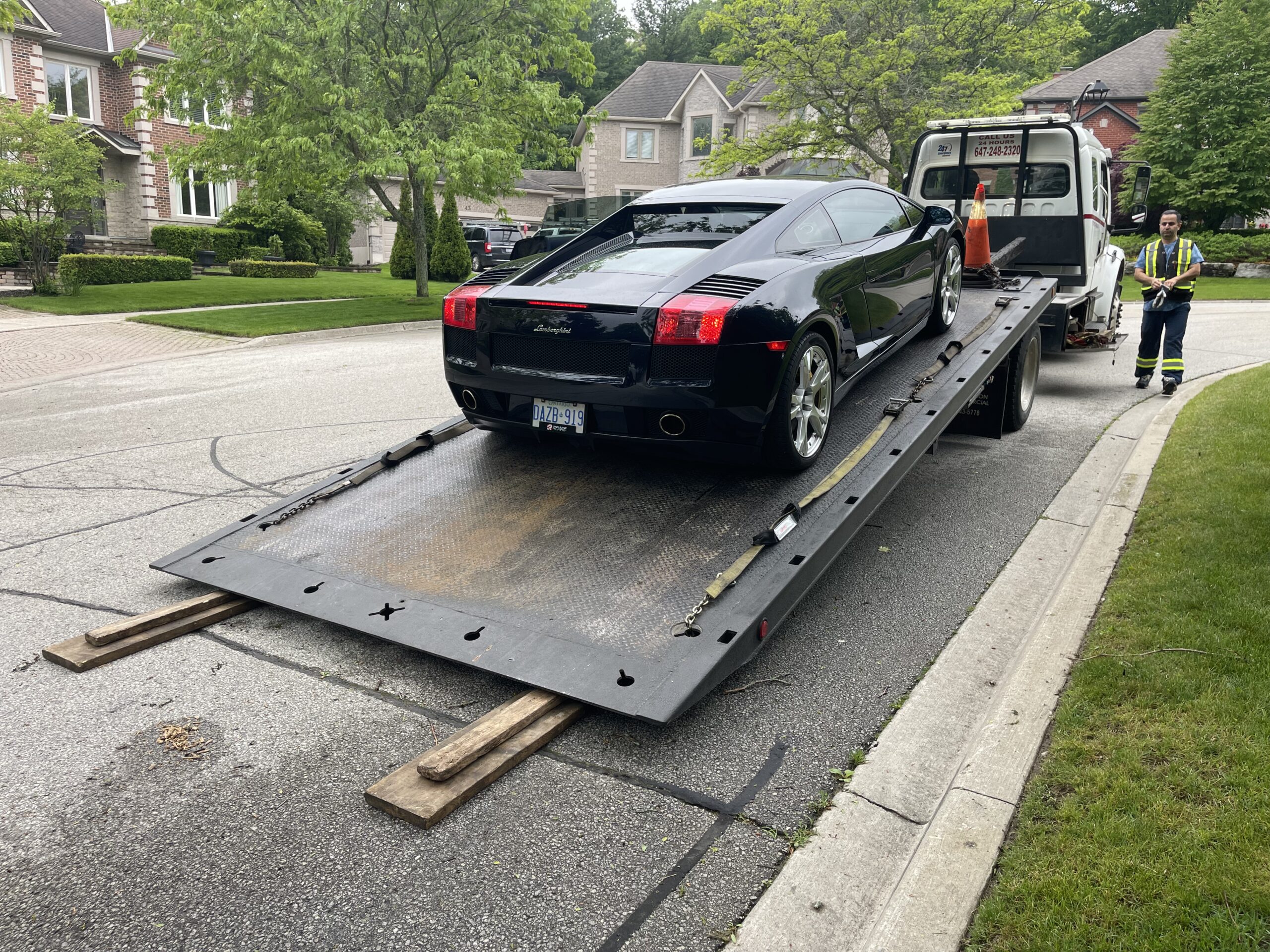
- Learn More >>>>How to chosing right truck for towing ?
15. The Safety Net: Preventative Maintenance and Roadside Preparedness
The biggest drain on your wallet isn’t just fuel—it’s unexpected mechanical failure. A small, unaddressed issue, like a failing fuel pump or a weak battery, can lead to a roadside emergency. When your car is running poorly, it is also running inefficiently, burning more fuel and increasing the likelihood of a breakdown.
- Routine Check-ups: Ensure you adhere to your vehicle’s service schedule. A mechanic can spot issues like misfiring spark plugs, a clogged fuel filter, or vacuum leaks that are secretly causing poor fuel economy.
- Stay Prepared: Being prepared for the worst can save you from a major inconvenience and a potentially expensive, emergency situation. Pars Towing is a proud local service, serving Aurora, Newmarket, and the entire GTA, providing 24/7 Roadside Assistance. While we are always ready to help with fuel delivery, a flat tire change, or a dead battery jump start, the true cost of running out of gas or breaking down includes wasted time and stress.
By practicing these 15 simple, common-sense tips, you can transform your driving habits and your vehicle’s performance. The cumulative effect of smooth driving, diligent maintenance, and smart planning will allow you to see significant savings at the pump, ensuring you save money on gas all year long. Remember, a little preparation goes a long way toward keeping your car on the road and out of the tow yard. Drive safely and efficiently!


